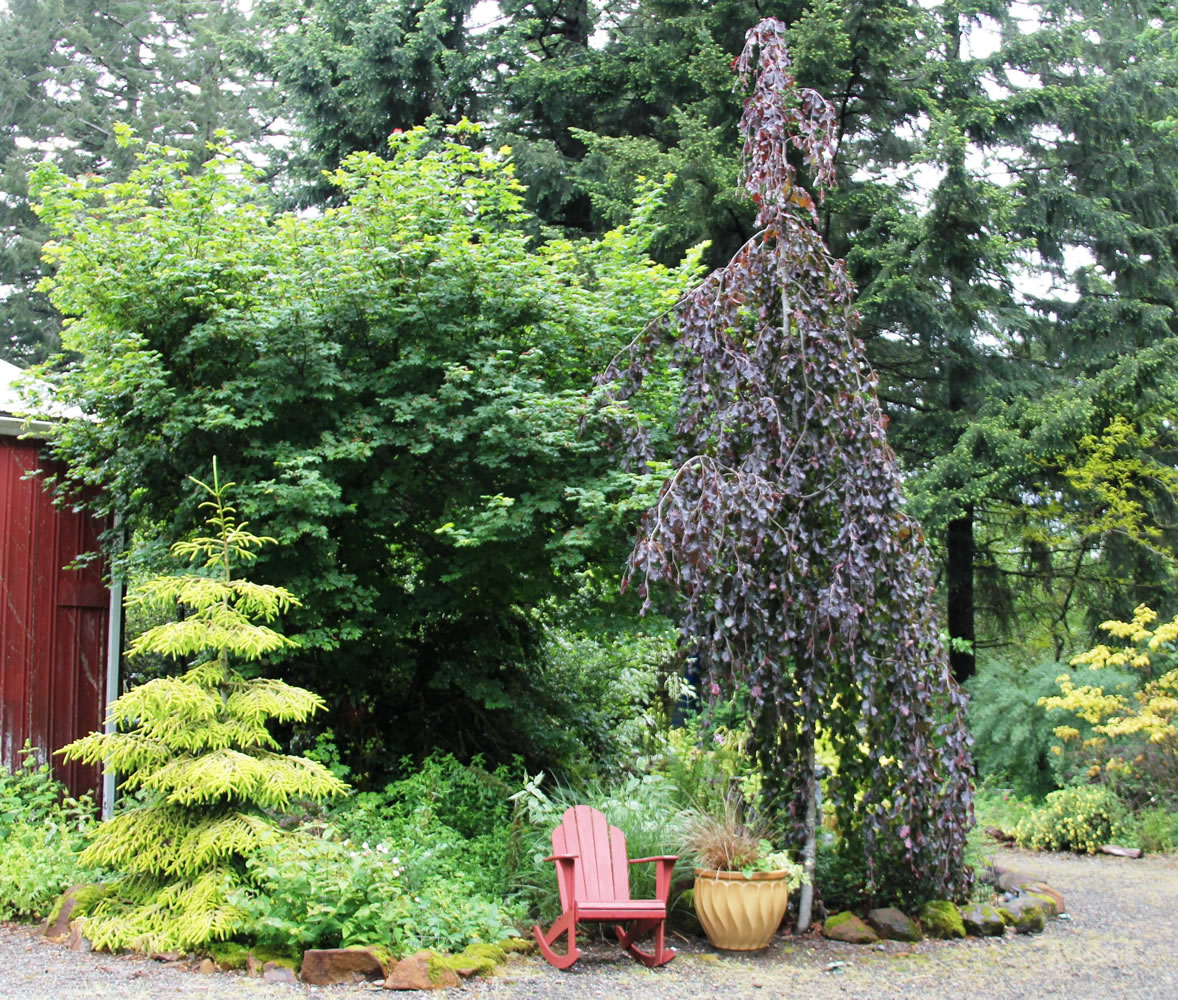Every day, I ask myself if it’s going to continue raining.
There are often sun breaks in midmorning and again at 1 p.m. and again at 3 p.m., but for most of the past week a steady drizzle has fallen. A month ago we had such a long spell of perfect weather that many of us thought our traditional summer drought had come early. Early or late, dry summer weather will return and I have made a commitment to give every plant at least one good inch of water a week.
Making a commitment to gardening can be as befuddling as our spring weather. You have to actually garden for a while before you learn the cold, hard truth about gardening. By this I mean you have to mow and edge and dig and divide and trim and deadhead and weed for a year or more before you understand that becoming a gardener is a sort of pledge. Even if you stop gardening, all the plants continue to grow. It takes a while for many
of us to learn that having a garden means we have taken on a responsibility.
Gardening is like any other endeavor you put your heart into. Many of the plants you plant will flourish and become beautiful. Many will not. Flowers bloom and flowers fade. The most perfect lawns are lush and luxurious. Next year that same lawn might get red thread, crane fly and crabgrass. The best roses have good years and bad years. Still, none of these occurrences are good enough reason to hang up your hoe. Even one good rose can renew our devotion.
By now we have found too much joy in the act of gardening to give it up. If we only settled for perfection, no one would garden or marry or throw parties. The trick is to accept the ups and the downs with equal aplomb. If your roses have a bit of black spot in June, cut the longest stems way back, remove and destroy the diseased leaves and then enjoy the beautiful roses in a lovely vase. Later, you can decide whether or not black spot is an issue you want to continue dealing with in your garden.
The garden designer, Jens Jensen, often told his students to “First grow cabbages. After that, plant a flower. When you have successfully grown a flower, then you can start to think about growing a tree. After watching a tree grow for several years … you can begin to think of a composition of living plants.” In reality most of us learn to garden in a more basic manner. We buy a plant we love for its flower, form and color. We take it home and plant it in the ground. It grows and we repeat the process until we are hooked.
Newly expectant gardeners want flowers in their border that bloom all year long. What they learn over the years that follow is how to make this happen despite the fact that one flower can’t do the job by itself. In early spring the pale blue delphinium is a knockout in full bloom. When it dies back in June the gardener plants a bright pink daylily to keep the garden interesting. In September it’s the addition of a purple coneflower and perhaps a hardy, fall blooming chrysanthemum. By now it’s obvious that anyone who hopes to see this project through to the end has made, at least, some level of commitment to gardening.
A flower border that blooms in succession throughout the seasons is just one indication of your continuing dedication. We are lucky to garden in the Pacific Northwest where we can have plants in flower, berry, fruit or leaf all twelve months of the year. It will most likely take many more than one or two of those years to get results that satisfy your expectations. In the process of gardening, your devotion grows and a concept of your gardening intention matures along with the trees and shrubs and perennials.
Of course, a dedicated gardener never stops learning. There will always be new plants, new methods and old ways of doing things to add to your repertoire. As the garden matures so will your knowledge of how things work. By then you will know more than you ever expected to know about gardening. We no longer believe that a flowering perennial will bloom all year long, but we never stop hoping that one will come along in our lifetime.
Robb Rosser is a WSU-certified master gardener. Reach him at Write2Robb@aol.com.



